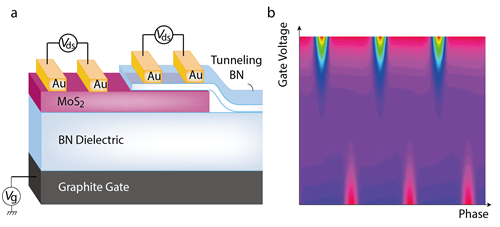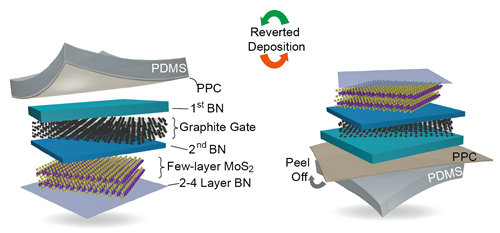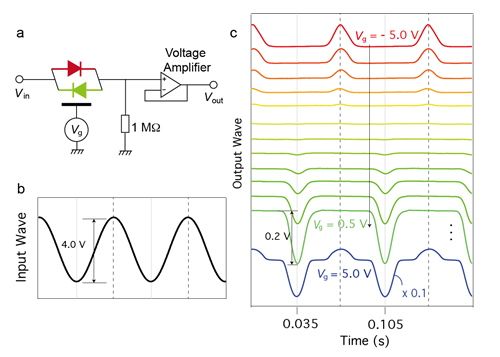Ever since the first discovery of the carbon flatland, the emerging family of two-dimensional (2D) materials has risen as an always-renewed topic for both fundamental and applied physics. In particular, atomically thin 2D semiconducting materials integrated into van der Waals (vdW) heterostructures have enabled architectures that hold great promise for next generation nanoelectronics.
However, applications based on one single 2D material in integrated-circuits (especially as CMOS-type logic devices) are still limited. This is mainly due to the fact that 2D materials are either gapless (such as graphene), or are wide-bandgap semiconductors with unipolar operation (such as state-of-the-art MoS2 transistors). Therefore, the demonstration of a bipolar device that is shown to be compatible for both diode and transistor operations are highly desired.
Recently, researchers from Shenyang National Laboratory for Materials Science (SYNL), Institute of Metal Research, Chinese Academy of Sciences (IMR, CAS) reported a device fabricated by a novel technique further refining the famed micromanipulated vdW 2D layers stacking technique with an added step involving an upside-down reversal of the stack called “reverted vdW stacking”.
This method enables the integration into vdW heterostructures of atomically thin top layers in an easy and highly reproducible way. When these ultrathin top layers are made of h-BN, this technique enables the integration of high quality and wrinkle-free capping layer that, when electrodes are deposited on top make possible the routine fabrication Tunnel Contacted Field Effect Transistors (TC-FETs).
Using the above mentioned technique, with an MoS2 conducting channel in the vdW heterostructure, researchers at SYNL show that tunnel barriers readily suppress Fermi level pinning and Schottky barriers that occurs at metal/MoS2 contacts (a common pitfall that holds the back for the application of 2D semiconductors in CMOS logic); This cancel band bending into MoS2 channel, leads to homogeneous gate-control of the channel chemical potential across the band-gap edges.
This technique gives rise to the observation of unprecedented features of an ambipolar pn to np diode, which can be reversibly gate-tuned. It can be further applied to a broader range of atomically thin semiconductors and their hetero-structures, which paves the way for future logic applications and high performance switches based on atomically thin semiconducting channel.
The entitled paper, "Gate-controlled reversible rectifying behaviour in tunnel contacted atomically-thin MoS2 transistor", was published at the latest issue of Nature Communication.

Fig. 1: a) Schematic of MoS2 TC-FET; b) Rectifying behavior of the TC-FET subjected to an input of sin wave. (Image by IMR)

Fig 2: a) Optical image of the MoS2 TC-FET; b) IV characteristics in the space of gate voltage and source-drain voltage; c) TEM cross section of a typical MoS2 TC-FET. (Image by IMR)

Fig 3: Schematic of the reverted vdW transfer technique. (Image by IMR)

Fig 4: Gate tuned rectifying behavior of the MoS2 TC-FET. (Image by IMR)